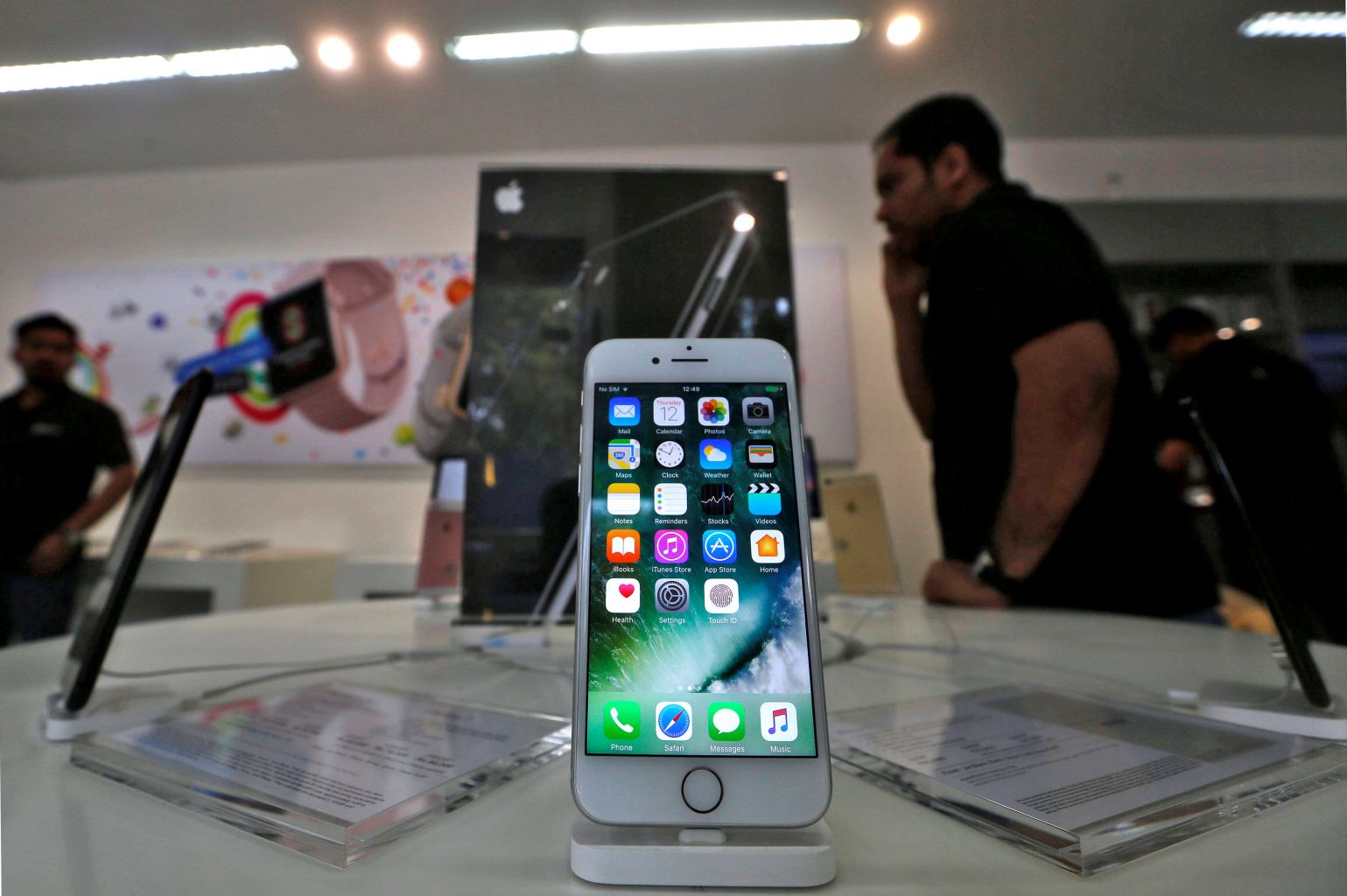Amid looming trade war with China, experts look at how the iPhone skews US trade deficits
Sign up now: Get insights on Asia's fast-moving developments

Apple shipped 61 million iPhones to the United States last year, data from researchers Counterpoint and IHS Markit show.
PHOTO: REUTERS
Follow topic:
SHANGHAI (REUTERS) - US President Donald Trump often tweets from his iPhone about pressuring China to address its US$375 billion (S$492 billion) trade surplus with the United States. But a closer look at the Apple smartphone reveals how the headline figure is distorted.
The big trade imbalance - at the heart of a potential trade war, with Mr Trump expected to impose tariffs on Chinese imports this week - exists in large part because of electrical goods and tech, the biggest US import item from China.
Apple's iPhone, however, illustrates how a big portion of that imbalance is due to imports of American-branded products - many of which use global suppliers for parts but are put together in China and shipped around the world.
Take a look at the iPhone X. IHS Markit estimates its components cost a total of US$370.25. Of that, US$110 goes to Samsung Electronics in South Korea for supplying displays. Another US$44.45 goes to Japan's Toshiba and South Korea's SK Hynix for memory chips.
Other suppliers from Taiwan, the United States and Europe also take their portion, while assembly, done by contract manufacturers in China like Foxconn, represents only an estimated 3 to 6 per cent of the manufacturing cost.
Current trade statistics, however, count most of the manufacturing cost in China's export numbers, which has prompted global bodies like the World Trade Organisation to consider alternative calculations that include where value is added.
The impact on export data of just the iPhone could be major.
Apple shipped 61 million iPhones to the United States last year, data from researchers Counterpoint and IHS Markit show, spending US$258 on average to make each iPhone 7 and 7 Plus.
Using a rough calculation, that implies the iPhone 7 series added US$15.7 billion to the US trade deficit with China last year, about 4.4 per cent of the total. That was also about 22 per cent of the US$70 billion in mobile phones and household goods the US imported from China.
"With an iPhone, where China is just the final assembler, most of the value (contributed by China) is just the labour rather than the components themselves," said Mr John Wu, an economic analyst with a US-based think tank, the Information & Innovation Foundation.
Mr Louis Kuijs, head of Asia economics research at Oxford Economics, notes that US companies' using global supply chains to manufacture products in China means other economies would be caught in the crossfire of a trade war.
"That is an important reason why US-China trade friction will cause 'collateral damage', especially in other Asian economies," he said, adding that in value added terms, the US trade deficit with China was only US$239 billion last year, 36 per cent lower than the headline number.
For its part, Apple has responded to Mr Trump's concerns with a pledge to bring some suppliers to the United States. It said in January that it planned to pay US$55 billion to US suppliers this year.
DESIGNED IN CALIFORNIA
Over the last decade, Apple shipped 373 million iPhones, worth US$101 billion by manufacturing value, in the United States, according to researcher StrategyAnalytics.
The iPhone's contribution to US trade deficits is almost certain to have grown sharply alongside higher retail prices and shipments.
But the manufacturing value does not include the intellectual property value Apple adds through engineering and design work done in its headquarters in Cupertino, California, as well as margins taken by distributors.
The iPhone X has a manufacturing cost of about US$400, an US$800 wholesale cost, and a US$1,200 retail unsubsidised cost, according to analysts.
Siri, Apple's "digital assistant", reflects the challenge of knowing exactly where the value of an iPhone comes from - even if it is put together in China. If users ask Siri where she is from, the response is: "Like it says on the box... I was designed by Apple in California."
The closely intertwined manufacturing ecosystem has led to warnings that a trade war would be painful for all sides.
Forty-five US trade associations representing some of the largest US companies urged the president on Sunday (March 18) not to impose tariffs on China, warning it would be "particularly harmful" to the US economy and consumers.
Retailers and shoemakers, including Wal-Mart Inc and Nike, also sounded the alarm on Monday over concerns the plans would result in higher consumer prices.
A 10 per cent tariff levied on Chinese electronics imports would slow the growth of US output by US$163 billion over the next 10 years, and a 25 per cent tariff would slow output by US$332 billion, according to the Information Technology & Innovation Foundation.
Mr Kuijs wrote that both sides would likely show restraint. All-out economic war, he added, "would cause major economic damage globally".

